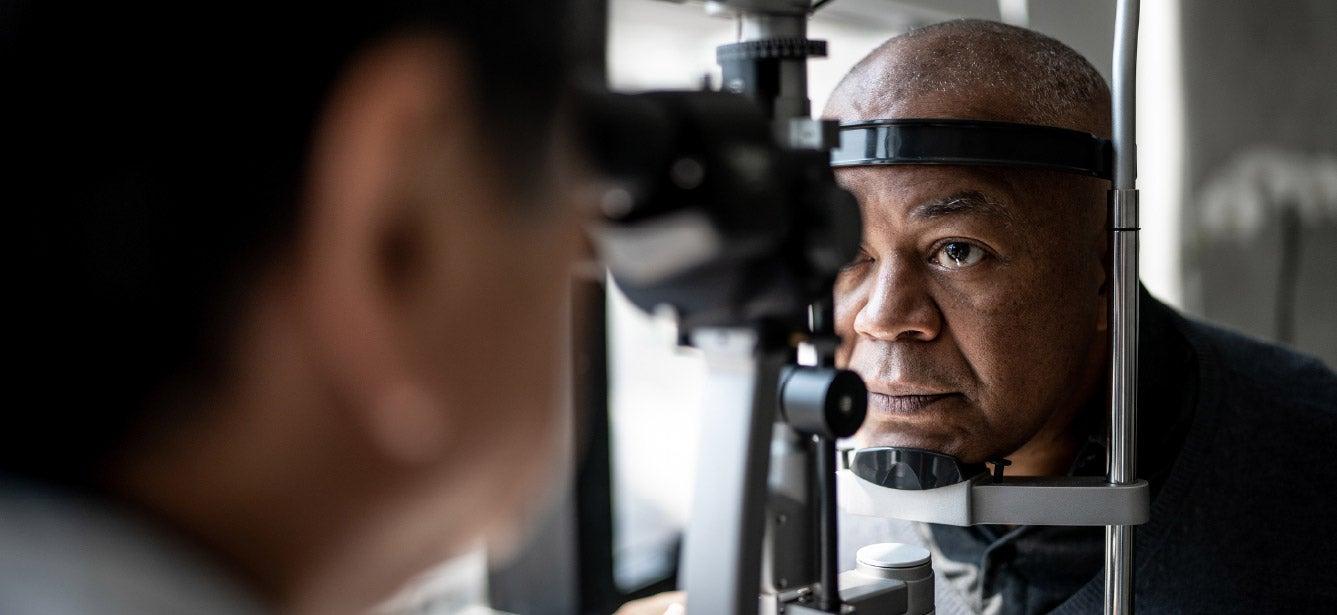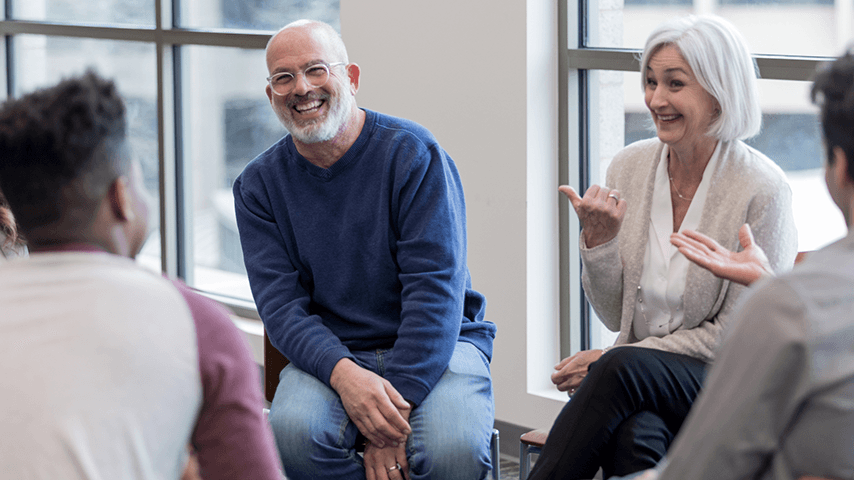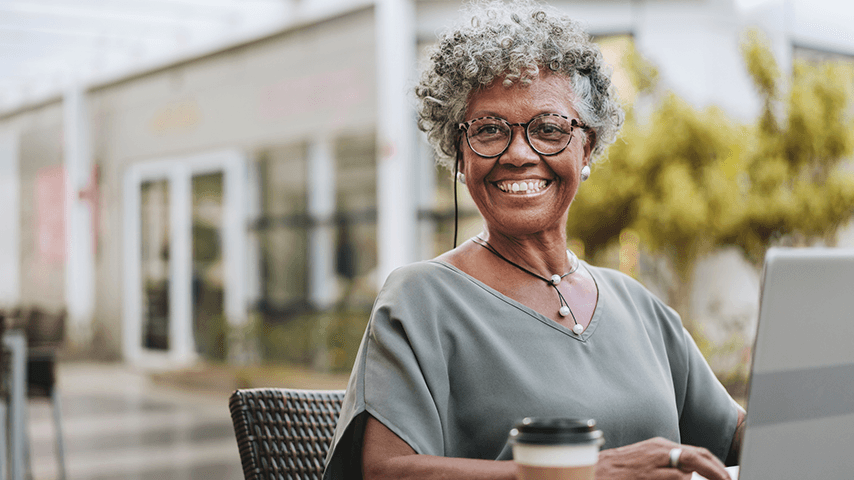
Related Topics
Vision loss represents a broad spectrum, from minor visual impairment to total blindness, and within this spectrum exist many misconceptions. For instance, contrary to popular belief, people considered to be legally blind can see more than complete darkness.
Total blindness is a term used to describe those with a complete lack of light perception…Only about 15% of people with eye disorders have total blindness; the majority of those with visual impairment have some level of vision.1
Knowing what low vision is, recognizing the importance of regular eye exams, and being aware of prevention and treatment options are all key to living well with any type of vision loss.
Understanding low vision: What is it and can it be corrected?
Most people considered “legally blind" have low vision, meaning they have permanent vision loss that cannot be corrected through medical intervention, corrective lenses, or other aids.
In the US, legal blindness is defined by two components of vision, visual acuity and visual field (peripheral vision). Someone with vision that cannot be corrected to better than 20/200 in the best eye or who has 20 degrees or less of visual field remaining is considered legally blind. Learn more about categories of vision loss as defined by the World Health Organization.2
Crucial eye exams: How vision loss is measured
Regular eye exams are critically important to protect sight. Your eye doctor will determine the best exam type based on a variety of important factors, including your vision, age, and more. Visual acuity is measured using the Snellen Eye Chart or newer visual acuity tests used for low vision tests. Visual field measures the width of the area you can see when focusing on a central point. Visual field tests measure how much vision you have in either eye as well as how much vision loss has occurred over time.3
There are many types of vision loss, so it is important to tell your eye doctor about any loss of central vision, blurred vision, loss of peripheral/side vision, increased sensitivity to glare, nighttime vision issues, or any other change in your eyes.
What is a low vision exam?
A low vision exam is different from a general eye exam in that it typically begins with an in-depth discussion about goals and specific challenges encountered when performing a broad range of everyday activities. Low vision specialists use additional tests to assess specific forms of vision loss to provide targeted approaches and functional aids to optimize the use of residual vision. Learn more about the difference between a regular and low vision exam.
How do eye doctors calculate the scope of vision loss?
The number of people facing vision loss may astound you. Globally, at least 2.2 billion people have a near or distance vision impairment. In at least 1 billion—or nearly half—of these cases, vision impairment could have been prevented or has yet to be addressed (or corrected).4
What can you do about age-related vision loss?
Although significant vision impairment can affect people at any age, most people facing blindness and low vision are 50 or older. To protect sight, older adults should be proactive:
- Get routine eye exams: Scheduling comprehensive eye exams with your eye doctor is a simple and effective way to measure existing vision loss and identify opportunities for correction.
- Address correctible vision issues: Your eye doctor can confirm options for vision correction, including eyeglasses, contact lenses, surgery, or other medical interventions.
- Discuss overall medical health with your eye doctor: Proper diagnosis and treatment of age-related medical conditions that may cause or exacerbate sight loss is vital. In addition to staying current with your primary care physician and other health care specialists, maintaining a schedule of routine eye exams can assist in early detection of some leading causes of vision loss among older adults, such as:
- Cataracts that cloud the eye's lens and interfere with light reaching the retina.
- Age-related macular degeneration, which also affects the retina.
- Diabetic retinopathy, causing leaks in the eye and retinal damage.
- Glaucoma and other conditions that cause eye pressure changes and optic nerve damage.
Effective treatment of these and other medical conditions can maximize eye health and protect sight.
How to prevent vision loss and other eye issues
Did you know that UV rays can damage your eyes and contribute to cataracts and other age-related eye issues? Wearing sunglasses with UV protection is essential. At-home and work-related eye safety measures can significantly reduce the risk of eye injury and permanent sight loss. The American Academy of Ophthalmology provides important tips to avoid eye injuries at home, and the American Optometric Association offers information on preventing eye injuries at work.
How to live a full life with blindness or low vision
Low vision can make everyday activities increasingly difficult, eroding confidence, safety, and independence. This is especially true when older adults face rapid vision changes. Many adults experiencing significant vision changes reduce participation in the cherished activities that once enhanced their quality of life. Major life changes can cause increased anxiety and depression, so it’s crucial that we connect with all available services and obtain as much support as possible.
How vision rehabilitation delivers hope and results
The good news is that agencies across the US offer a broad range of life-changing vision rehabilitation programs and training, enabling adults with low vision to live richer, more rewarding, and independent lives. Support groups are available in many areas to connect with people experiencing similar vision issues and share life-enhancing ideas and encouragement. Learn more about the types of vision rehabilitation programs and services currently available.
Help is a click or phone call away. If you or someone you care for is facing life challenges due to blindness or low vision, schedule an eye exam today! Visit Time to Be Bold to find vision rehabilitation services and resources in your area. Call the APH hotline to speak with someone who can help. Obtain practical coping strategies for everyday tasks, find a support group, and access free online resources at APH Connect Center and VisionAware. You can also learn more about major issues the Aging and Vision Loss National Coalition is addressing to improve the lives of older adults facing blindness and low vision.
Sources
1. Blindness, So Yeon Lee & Fassil B. Mesfin. StatPearls. StatPearls Publishing. January 2023. Found on the internet at https://pubmed.ncbi.nlm.nih.gov/28846303/
2. American Optometric Association,.Low Vision, and Vision Rehabilitation. Found on the internet at https://www.aoa.org/healthy-eyes/caring-for-your-eyes/low-vision-and-vision-rehab?sso=y
3. David Turbert. Visual Field Test. American Academy of Ophthalmology. Found on the internet at https://www.aao.org/eye-health/tips-prevention/visual-field-testing
4. World Health Organization. Blindness and Vision Impairment. October 2022. Found on the internet at https://www.who.int/news-room/fact-sheets/detail/blindness-and-visual-impairment



